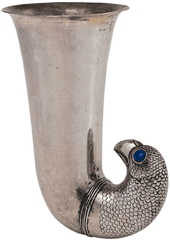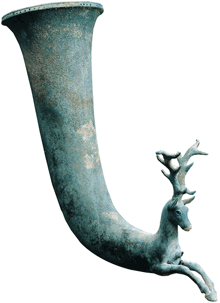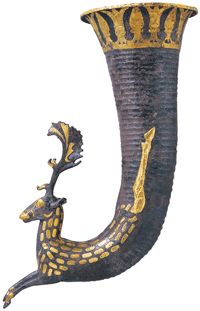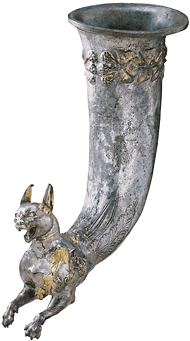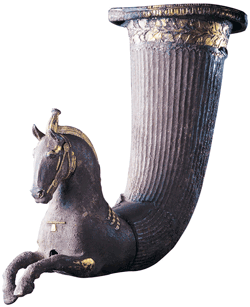
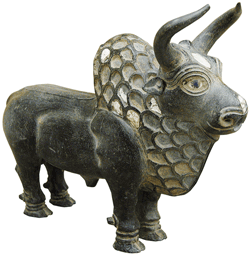
Rhyton in shape of a Zebu
Eastern Iran/Western Central Asia
late 3rd to early 2nd millennium B.C.
Eastern Iran/Western Central Asia
late 3rd to early 2nd millennium B.C.
The Greeks used vessels called rhytons about 2,500 years ago. Perhaps because they have a flared mouth in which to pour wine and a spout from which wine flows out, the term “rhyton” was derived from the Greek word with meaning of “to flow.”
Rhyta were not meant to be receptacles to store wine but rather used as pouring vessels. They were created in West Asia about three thousand years ago as the union of ancient horn-shaped and animal-shaped vessels from the Eurasian continent that existed since the Neolithic period. These objects were indispensable in sacred ceremonies for their shapes must have held some special meaning.
